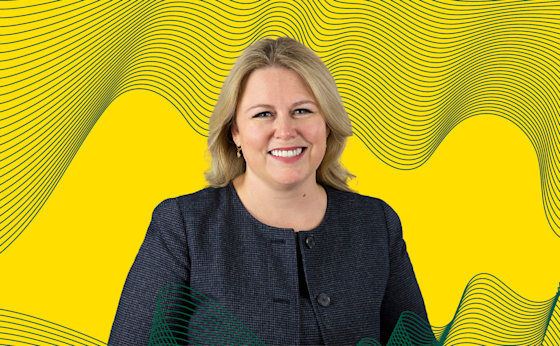
This report shows how each digital banking engagement platform provider measures up and helps technology decision-makers at banks select the right one for their needs.


Get access to a single webinar that is currently outside of your subscription.
Price: $300 (USD)
Partner with Forrester Research to get access to webinars, insights and frameworks aligned to your role. Shorten the time between a great idea and a great outcome, helping your teams win in the age of the customer.
This webinar introduces the category of digital banking engagement hubs and explains why both digital banking engagement platforms (DBEPs) and hubs (DBEHs) are important, as well as how Forrester sees both solution categories evolving. After a look at the evaluation criteria and results, we’ll examine key findings and trends in the DBEP and DBEH markets.
Attend this webinar to find the right digital front-end solution for your bank’s digital banking strategy and begin the path toward buy plus build.
Key takeaways:
Target audience level: intermediate
Vendors mentioned: Backbase, CREALOGIX, EdgeVerve, Finastra, FIS, i-exceed, Intellect Design Arena, Oracle, Sopra Banking Software, Technisys, and Temenos.
You'll receive an email with dialing and Webex instructions prior to the Webinar.
See the Webinar FAQs for answers to technical and other Webinar questions.

This report shows how each digital banking engagement platform provider measures up and helps technology decision-makers at banks select the right one for their needs.

This report shows how each digital banking engagement hub provider measures up and helps technology decision-makers in banks select the right one for their needs.

Connected product engineering services providers help their clients imagine, design, test, build, sell, or maintain connected products. These connected products combine a physical product with supporting apps and digital services and can include anything from a connected toothbrush or coffee machine to software-defined vehicles and smart factories. In this webinar, we look at our most recent evaluation of providers in this market.Key takeaways: Learn which connected product engineering services providers we evaluated in our research, and how they performed.Understand the broad range of tasks a connected product engineering services provider may be called on to tackle. Explore when and how your organization might want to engage with a connected product engineering services firm.Target audience level: all levels

Join our webinar to discover how emerging technologies will reshape digital experiences in the next decade. We explore how organizations can deliver modern interfaces, deepen consumer understanding through advanced analytics, enhance decision-making with intelligent automation, and orchestrate and accelerate experience delivery. We also discuss how these innovations are driving a shift toward more human-centered and empowering experiences.Key takeaways: Learn which emerging technologies will have the greatest impact on digital experiences.Learn how these innovations will enable more assistive, anticipatory, and agentic experiences.Target audience level: all levels

Join Forrester principal analysts Judy Weader and Arielle Trzcinski to hear about the total experience for US health insurers. This webinar covers the components of the Total Experience Score — Customer Experience Index (CX Index™) and Brand Experience Index (BX Index™) — as well as how trust impacts quality perceptions and loyalty indicators.Key takeaways: Learn about the key ratings of total experience, customer experience, and brand experience.Understand the impact of trust on quality perception and loyalty.Target audience level: all levels

Disruptive technologies are a double-edged sword for environmental sustainability, offering both crucial enablers and significant challenges. On the positive side, technology innovations accelerate energy and resource efficiency, aid in climate adaptation and risk mitigation, monitor crucial sustainability metrics, and even help in environmental conservation. However, the necessary compute power, volume of waste, types of materials needed, and scale of implementing these technologies can offset their benefits.In this webinar, we discuss our latest report, which explores the dual roles of six disruptive technologies, and illustrate the beneficial use cases to guide sustainability and technology leaders on how to use them for good.Key takeaways: Explore the case studies and examples on leveraging disruptive technologies to focus on optimization.Learn about the disruptive technologies that will make the most impact in sustainability in 2025.Target audience level: beginner and intermediate

Today’s public sector environment changes daily. Tech leaders in government groups are pushed to maximize the budget they have. The most logical place to start? Portfolio rationalization. Techniques such as project prioritization, resource allocation, and redundancy elimination are essential to streamline operations and enhance overall efficiency. Although these steps will help drive down cost — the goal is creating a more adaptive platform that is responsive to changing needs and capable of integrating advanced technologies, including AI. This AI-ready framework enables agencies to leverage data-driven insights for better decision-making, predictive analytics for future planning, and automation to reduce manual workloads, ultimately driving innovation and delivering superior outcomes for their constituents.Key takeaways: Learn how to assess and rank projects based on strategic importance and resource availability to ensure optimal portfolio composition.Discover techniques to streamline operations by removing overlapping or unnecessary initiatives, thereby improving efficiency.Gain insights into effective resource management strategies that enhance operational effectiveness and drive better outcomes for government agencies.Target audience level: beginner and intermediate

CRM is a critical piece of technology infrastructure that underpins a firm’s ability to deliver next-generation financial services. It connects organizational silos to drive customer and business value. CRMs are integrating AI and adding intelligent agents to boost productivity and deliver personalized customer experiences at scale. This makes CRM an indispensable tool for financial services firms aiming to enhance customer experiences, streamline operations, and drive growth.Despite the benefits, we often hear that financial services firms struggle to justify the investment in CRM modernization, and firms that have done so say that they’re struggling to extract value. This makes it more important than ever to choose the right vendor. But the financial services CRM market is bifurcating, making vendor choice even harder.Key takeaways: Understand the financial services CRM market, key vendors, and common financial services use cases.Learn how AI (predictive, generative, and agentic) is transforming CRM and what it means for financial services firms.Uncover the mistakes that are leading to the underutilization of CRM by financial services firms.Identify the key considerations that should inform financial services firms’ CRM purchasing decision.Target audience level: intermediate and advanced